Understanding the Art of Stop Motion
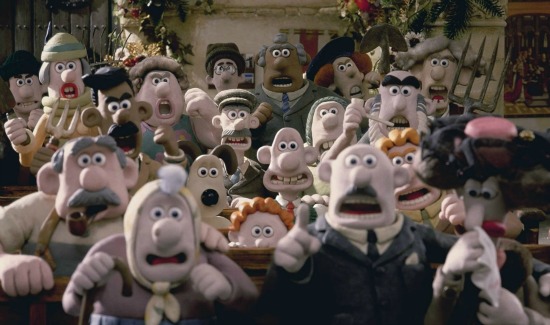
Stop motion: the art of bringing inanimate objects to life. While some filmmakers might find this style of animation tedious, there are those that appreciate and treat it as an art form. There is something magical about physically touching the objects to immerse oneself into one’s work, and stop motion is slowly gaining recognition for its peculiar style. Its origins trace back to the late 1800s, to a time when ‘movie magic’ helped viewers believe that the objects were moving on their own. Unfortunately, compared to Computer Graphic Images (CGI), stop motion may no longer seem impressive to viewers, as its choppy movements can be considered too ‘retro’ for the audience.
However, technology has advanced to improve this process, thus stop motion can no longer be considered ‘out-dated’ compared to its competitors. This article will explore how stop motion has become popular by looking at its history, and analyze how other studios are currently using it. Although it is always compared to other animation styles, such as CGI, stop motion has its own charm that has led filmmakers to choose this medium for stylistic reasons, as stop motion is able to present a ‘handcrafted’ feel to the audience.
Stop Motion: A Brief History
What gives stop motion that ‘handcrafted’ feel is the fact that it is the art of object manipulation, as the object is moved in small increments between individual photographed frames. This creates the illusion that the object is moving, and there are many forms of stop motion to give this animation style its own genre. There is claymation (or clay animation), the most common form of stop motion, in which clay models are created around a wired skeleton to be used as subjects. There is also time-lapse animation, in which single frames are taken at periodic intervals (ex: to make the weather change in the course of a day), puppet animation, and pixilation, which has human subjects move from frame to frame. 1 With such a rich history, it would be impossible to make this brief history lesson ‘brief’ because of stop motion’s vast timeline. Thus, this article will focus on the pioneers of this art form and a few American artists that are well-known in history.
The first use of stop motion animation was in 1898 when Albert E. Smith and J. Stuart Blackton made The Humpty Dumpty Circus using object animation. The premise was simple – move the objects to make the toy circus come to life. Following this notion was Thomas A. Edison’s Fun in a Bakery Shop, which was directed in 1902 by Edwin S. Porter (the video below). Fun in a Bakery Shop used a mix of object animation and stop-action photography, which involves pausing and changing something in the shot before resuming the film. In this particular short, the baker stops his motions to appear to be instantaneously making all of the faces out of dough. 2 These techniques made stop motion easy to make, and it took America 31 years later to notice it as an art form thanks to Willis O’Brien.
Willis O’Brien was gifted in the creation of stop motion creatures and is known for his visual effects in the film King Kong (1933). The film’s success was dependent on O’Brien’s realistic creatures, as he focused on King Kong and the dinosaurs. He was obsessed with details and based his dinosaur models on precise paleontological studies. He also created a King Kong that was not just a model but also a character. 3 O’Brien did this by using full armature skeletons and putting rubber skin and fur over the models, creating the iconic stop-motion shots of King Kong atop the Empire State Building 4 (which can be viewed below).
O’Brien’s work inspired his protégé, Ray Harryhausen, to carry on the work, as he further blended the stop motion model with live action footage. Harryhausen is well-known in stop motion’s history, as he created creatures for films such as Jason and the Argonauts, One Million Years, and Clash of the Titans. Following the release of the 1981 release of Clash of Titans, special effects evolved to utilize computer graphics and diminished the art. However, stop motion’s animation still appealed to many artists, which led to its revival decades later thanks to the release of The Nightmare Before Christmas (1993).
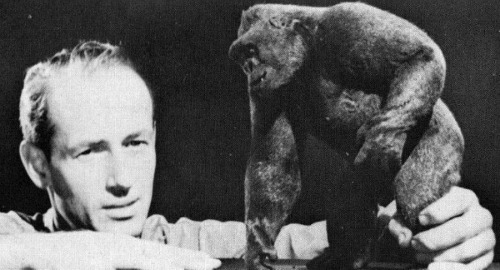
Popularizing the Art Form
There are many artists that popularized the art form in their storytelling. Stop motion is perhaps chosen because of preference, but fans believe that the appeal of stop motion lies in its magical qualities, as stop motion animators are able to transform the ordinary – similar to how children use imagination to transform their toys 5. In particular, there are a few filmmakers that are well-known for their stop motion films, which will be explored in the section below.
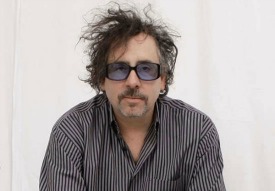
Tim Burton
The most influential stop-motion artist is Tim Burton, as his film, The Nightmare Before Christmas, was the first film to be made entirely with stop motion techniques. Previously, stop motion was used for shorts and special effects, and was designed to only hold the audience’s attention for a brief moment 6. This was because stop motion was and still is time consuming, thus involving the audience on an emotional level for 90 to 120 minutes was an arduous task. However, Burton was able to achieve commercial success with The Nightmare Before Christmas, and he built upon his success with other films such as James and the Giant Peach (1996), Corpse Bride (2005) and Frankenweenie (2012). As for Burton’s decision on why he chose stop motion, he states, “There’s an energy with stop-motion that you can’t even describe. It’s got to do with giving things life.” 7
Henry Selick
Although Burton’s name is associated with The Nightmare Before Christmas, many are not aware that the director that brought the movie to life was none other than Henry Selick. Before working on The Nightmare Before Christmas, Selick worked on his own projects, and one that became a critical success was Seepage. For Seepage, Selick mixed stop motion and water colour animation to tell the story of two people talking while sitting near a pool 8. He then worked with Disney, and worked on films such as Pete’s Dragon (1977) and The Fox and the Hound (1981). In his boredom and anticipation to search for his next film, he found The Nightmare Before Christmas, and was excited to work with his former classmate Burton.
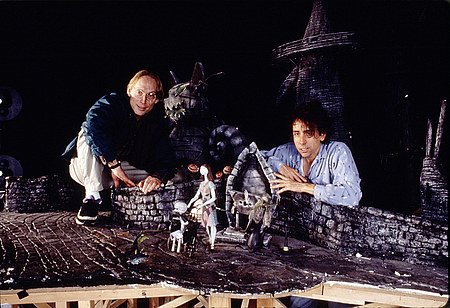
While Burton handled the creative decisions, Selick decided to push the boundaries of stop motion. It was a painstaking process, as each model had to be created and constantly retouched. This resulted in the film to be in production for two years until it was released. In his review of the picture, Roger Ebert, a well-known film critic, said:
But the director of the film, a veteran stop-action master named Henry Selick, is the person who has made it all work. And his achievement is enormous. Working with gifted artists and designers, he has made a world here that is as completely new as the worlds we saw for the first time in such films as Metropolis, The Cabinet of Dr. Caligari and Star Wars 9.
The studio was so proud of the film’s success that Selick continued to work with Burton and directed James and the Giant Peach and Coraline. Although Selick’s films are not consistent blockbusters, some consider his films to be the most interesting and innovative, as they feature a number of emotional and technical layers that add a personal tone to each production 10.

Nick Park
A British animator, Nick Park is known for creating the characters, Wallace and Gromit, and completed his first short at Aardman Animation called A Grand Day Out (1985). Park became well-recognized in the industry after winning a British Academy Award for A Grand Day Out, and he created more Wallace and Gromit shorts such as The Wrong Trousers, A Close Shave and A Matter of Loaf and Death. 11 After winning awards for his shorts, Park set his eyes on making feature length films, and created Chicken Run (2000) and The Curse of the Were-Rabbit (2005). He continued to win many awards until an unfortunate incident occurred when a fire destroyed the Aardman warehouse that stored all the sets and models for Chicken Run. 12 Luckily, the Wallace and Gromit models were safe, but there was no hope for a sequel to Chicken Run (although one can enjoy the animation for the scene below).
With so many inspiring stop motion filmmakers, one would think that there would be more artists working with this medium. Unfortunately, stop motion does not always do well commercially, thus many filmmakers prefer to work with CGI instead. This makes it fair to compare the two mediums, as there are pros and cons for both styles of animation.
CGI vs. Stop Motion
Unfortunately, there is a large difference when it comes to the profits between stop motion and CGI. The highest gross film for stop motion is Chicken Run with an estimate of 225 million 13, which is an impressive feat, as the film was made on a 42 million budget 14. However, the 1.2 billion that Frozen cashed in makes Chicken Run‘s profits seem like ‘chump change’ in comparison, but it is also worth mentioning that Disney had an excellent marketing strategy, as explained in this article.
With the advancement of modern technology, techniques for CGI are also getting better, as CGI is not only used to make animated films but also special effects (a more detailed look can be seen here). This notion is the same for stop motion, as video assist and capture software enables for a more efficient technique and sophisticated motion. 15 Therefore… if both mediums are steadily improving, which one is better?
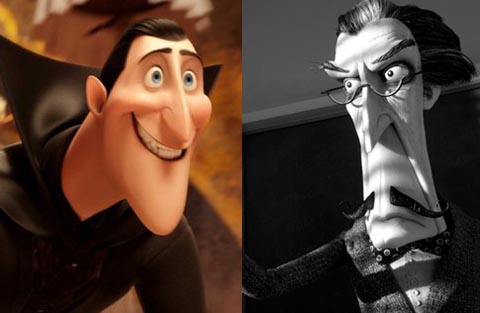
Honestly, deciding between CGI and stop motion is similar to asking a painter if they prefer to paint with acrylics or watercolours – it all depends on preference. Whereas some viewers may be more accustomed to the look of 3D films (and find stop motion strange), there are also those that enjoy stop motion and appreciate the effort it takes to create these masterpieces. Not all viewers care about the animation style, as the most important element in a film is to entertain the audience. Therefore, the medium should not be blamed for a loss in profits, as storytelling is the primary goal for every film that is produced.
Rather than deciding which one is better, why not combine the two styles together? If utilized properly, CGI is able to improve stop motion by reducing the blur and increase the smoothness in animation. If the two styles mix, this will not only bring new life to the art, but also increase the quality of these films. Thus, a marriage is formed.
The Marriage
There are limitations when it comes to producing stop motion films by hand because of the time and effort it takes. Hence, the marriage of CGI and stop motion not only makes it easier, but also provide a gateway to create some incredible things. Some might call this ‘cheating’, but according to the directors of ParaNorman, CGI comes in a pinch when it is not practical to create certain things by hand. Chris Butler, one of the directors, states:
“We’re not militant purists about it. We always think, ‘We know what imagery we want to capture and then we use the best method to get it.’ Our starting point is always going to be practical; it’s always going to be handmade because that’s the studio we are. But we would never say no to something because you can’t realize it practically. If we need CG to fix this…” 16
The studio Butler refers to is called LAIKA Films, an animation studio based in Oregon known for its stop motion creations. LAIKA Films has created films such as Coraline, ParaNorman and The Boxtrolls, and has ‘handcrafted and transformed everyday materials into living creatures infused with dimension and soul’. 17 However, practicality wins over stop motion traditions (aka building everything by hand), thus LAIKA films is known for using innovative technology to help with the process.
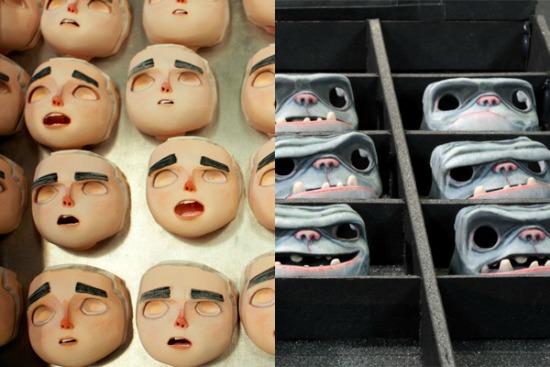
For example, the character models for The Boxtrolls were created with 3D printers. This was essential to the production, as The Boxtrolls had 79 sets and more than 20,000 props to make. Before 3D printing existed, the art department had to individually make each expression by hand. It seems tedious to make a new face each time, but for stop motion, this is part of the process on creating an animated character. In fact, Eggs, the main character in the film, had 1.4 million expressions in total. 18 That’s a lot of expressing!
If the people in the past were told to make 1.4 million expressions, they would certainly quit on the spot. Thus, 3D printing and other modern tools have made the impossible possible because of the existence of this technology. Graham Annabele, the director of The Boxtrolls, explains, “It’s the subtleties that the printers are capable of, which goes back to the printers themselves but also the materials that they’re putting through them now. The faces have a look kind of like a Lucian Freud portrait or even an Egon Schiele painting where the color variation is very subtle.” 19
LAIKA Films is an example of a studio that takes a classic art form and transforms it using technology. The past meets the future in this production process, which demonstrates that stop motion has the ability to make an impact on screen if the right tools and people work on the project together.
So what is to be expected for the future of stop motion? With the lack of stop motion films being produced, many assume that stop motion is dying and that studios prefer to use CGI for their feature length films. Is it because CGI performs exceedingly well compared to stop motion? By looking at its history, it can be speculated that the interest for stop motion simply fluctuates, and that the interest grows depending on how the filmmaker uses the medium.
The advancement of technology has also helped with stop motion productions, and there is no shame in combining CGI and stop motion together. In regards to numbers, it is not always the medium’s fault for a film’s loss of profits. Rather, storytelling is an important factor for the film’s performance, which is why scripts are rewritten several times before they are put in production. Although stop motion can be time consuming, its lengthy process also makes for a good joke, as explained in this ‘fourth wall breaking’ scene from The Boxtrolls. After all, there is nothing scarier than a fictional character questioning their existence and universe.
Works Cited
- Dawson, Nick. “A Short History of Stop Motion.” Focus Features. NBC Universals, 6 Feb. 2009. Web. ↩
- Kelly, Kevin. “A Brief History of Stop-Motion.” Film RSS. Film, 04 Feb. 2009. Web. ↩
- Kelly, Kevin. “A Brief History of Stop-Motion.” Film RSS. Film, 04 Feb. 2009. Web. ↩
- Dawson, Nick. “A Short History of Stop Motion.” Focus Features. NBC Universals, 6 Feb. 2009. Web. ↩
- Cox, David. “Stop Admiring Frankenweenie! Why Stop-motion Doesn’t Move Me.” The Guardian. The Guardian, 15 Oct. 2015. Web. ↩
- Priebe, Ken A. “History of Stop-Motion Feature Films: Part 1.” Animation World Network. AWN Inc., 20 Jan. 2011. Web. ↩
- Cox, David. “Stop Admiring Frankenweenie! Why Stop-motion Doesn’t Move Me.” The Guardian. The Guardian, 15 Oct. 2015. Web. ↩
- “Layers: A Look at Henry Selick.” Digital Media FX. Digital Media FX, n.d. Web. ↩
- “Layers: A Look at Henry Selick.” Digital Media FX. Digital Media FX, n.d. Web. ↩
- “Layers: A Look at Henry Selick.” Digital Media FX. Digital Media FX, n.d. Web. ↩
- Dawson, Nick. “A Short History of Stop Motion.” Focus Features. NBC Universals, 6 Feb. 2009. Web. ↩
- Dawson, Nick. “A Short History of Stop Motion.” Focus Features. NBC Universals, 6 Feb. 2009. Web. ↩
- “Animation – Computer.” Movies at the Box Office. Box Office Mojo, n.d. Web. ↩
- “Chicken Run.” IMDb. IMDb.com, n.d. Web. 28 Oct. 2015. <http://www.imdb.com/title/tt0120630/>. ↩
- Emson, Kim. “Picking Your Medium. Stop Motion or CGI?” Kim Emson Animates. N.p., 03 Apr. 2011. Web. ↩
- Eisenburg, Eric. “Why The Marriage Of Stop-Motion And CGI Is A Great Thing.” CINEMABLEND. Cinema Blend LLC, 16 Aug. 2012. Web. ↩
- LAIKA FIlms. LAIKA LLC, n.d. Web. <http://www.laika.com/>. ↩
- Horn, Leslie. “3D Printing Makes Stop Motion Animation Look Magical.” Gizmodo. Gizmodo, 19 Sept. 2014. Web. ↩
- Horn, Leslie. “3D Printing Makes Stop Motion Animation Look Magical.” Gizmodo. Gizmodo, 19 Sept. 2014. Web. ↩
What do you think? Leave a comment.
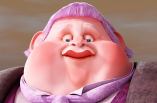
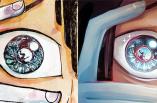





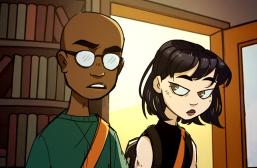



Fantastic article. Im really glad that you pointed out how Stop motion and CGI are very similar in many ways. They are both trying to beak the visual illusion when it comes to film making. It is great that the animation studio LAKIA shows how both art forms should not be seen as so different, and it show why they both work together greatly.
This was a very cool article, from the first sentence I was hooked. You opened my eyes to a lot of aspects to stop motion that I had not noticed before. I look forward to reading more articles by you! 🙂
Thank you! I look forward to reading your articles as well! 🙂
I really enjoyed the video clips that you included; I felt that they really helped me to understand the content of your article better. I thought that this was very well-written as well. This was really a nice glimpse into animation styles.
I really love Stop animation, thank you for making this article. The ending of the Boxtrolls was one of my favorite things. LAIKA Films is always impressive with their work.
Good intro to the topic, but the article is a little hurried in its historical overview of stop-motion animation, seeming to suggest that nearly no one effectively adopted the technique after Harryhausen and before the Burton/Selick revival. In fact, a number of filmmakers achieved significant artistic success between the 1950s and the 1980s, chiefly among them Norman McLaren, Jan Svankmayer, and many others.
I wanted to make the history part ‘brief’, but I can see why you think it is rushed. Perhaps someone else in The Artifice will write a more detailed analysis in the history, or people can research about it if they want to learn more 🙂
I personally Have always been a huge fan of the way stop motion looks and I think it brings a unique feel to movies such as the fantastic mr. Fox. I love how you can see the fur move randomly in that film because of the creators fingerprints when moving the characters. I find it extremely interesting.
If a picture paints a thousand words, stop-motion would paint a million or more.
Jan Svankmajer, one of the greatest stop-motion animators in the history of the medium, once said that he couldn’t work in CGI because he needed to have his creations physically in front of him.
And it’s easy to see what he meant: you could certainly have a go at replicating his Dimensions of Dialogue in CGI, but it wouldn’t have the same tactile physicality. In the middle claymation sequence in particular, you can actually see the imprint of fingers shaping the clay – and it’s not a technical flaw: Svankmajer fully intended you to see it and to imagine your own fingers in a similar position.
And this is why his work is so viscerally effective in a way that CGI creations aren’t.
I am finished with Tim Burton. He’s sold himself out too many times, and still trades on the artisanal associations we have with stop-motion.
A few years back I had the opportunity to see Tim Burton’s art exhibition at LACMA. I still say it was the most amazing experiences I’ve ever had at an art show. Getting to see Burton’s early work from his teen years, all the way to sketches made for Corpse Bride was a thrill. I’ll always have respect for the man, even if he’s made movies like Dark Shadows and CATCF.
The Alice one from the 80s is one of my favorites!
I wish they would make more stop motion movies. I love them so much!
My favourite stop motion was Wind in the Willows by Cosegrove Hall
I love that film too! That film is probably the best version of ‘The Wind in the Willows’.
I can’t decide if it’s impressive or sad that the 1920s propaganda retelling of Gulliver’s Travels is infinitely better than Jack Black’s movie.
Pixar has DONE a great step in animation in this years. but I think there are to much imagination limitations in that kind of production: too cold digitals and computer process.
Instead with stop motion, my imagination is definitely free, and I can feel much better the story someone is explaining to me… and the story keeps going on running in my head also after the movie is finished. Maybe I can say: it’s like reading pictures taken from solid characters. and this make ’em alive.
Stop motion is something magical CG will never have!
The Nightmare Before Christmas was one of my favorite movies growing up, and what got me into stop motion. There was also a game I really like that used stop motion with clay, called Neverhood.
A very good summary of the history of stop motion and its’ encounter with newer forms of animating technologies. Its wonderful to realize that stop motion will forever be wed to visceral media, as CGI’s digital foundations have in many ways removed the audience and animators from experiencing the medium itself (what exactly becomes the medium once we cross into the digital realm?)
In a sense stop motion is to analog film as CGI is to digital film.
There is a magic to stop motion that I think you capture here. Despite the evolution of technologies, it is a medium that will always retain interest in popular culture through its ‘handcrafted’ feeling. Whereas CGI aims to bridge the gap visually between story telling and reality, stop motion has developed a way to involve the viewer without having to give up its material presence… thus emphasizing the importance of story telling.
Wonderful article that really made me think! Excellent work.
Wow, I’m really happy that you enjoyed this article! It’s a shame that stop motion gets overlooked, but it really has its own charm.
Stop motion is great, not only because of the effects and stories, but because of the hours of work behind them. It’s clear that those who work in Stop Motion, do so because that’s what they love. Just the thought of all those hours making everything perfect, and the care that goes into every scene and movement and expression baffles me. It’s refreshing to know that these people- the people who subject themselves to this- are willing to go above and beyond. Of course, Stop Motion and CGI are both great and have their own merits, but combined they keep me at the edge of my seat. Movies like ParaNorman are so outstanding I can’t even begin to fathom that amount of work gone into it. Kudos to those crazy people willing to entertain an audience with Stop Motion productions!
This was a fantastic read! Thank you!
Stop-motion lends itself to a subtler, more nuanced portrayal of the subjects and I always liked that.
stopmotion is an art form like any other. there are some people who are great at it and some others who like tim burton who are mediocre at it. don’t judge stopmotion by the films of tim burton just like you wouldn’t judge live action films by anything he’s done. the guy is a bore.
Two words. King and Kong.
1933: a stop-mo work of art.
1976: a man in an ape suit.
2005: an adequate (if girlie) CGI homage.
Which is the best? No-brainer.
I love Tim Burrton’s style. If I had to make one critique, it would be that all of his main male characters are kind of Gary Stu’s, or characters that are blatantly him in cartoon form. But the stories are usually so great I can overlook that.
I love stop motion so much, and it’s great to hear about some of its history.
Amazing how you can convey emotion by subtle adjustments to the characters faces.
Phenomenal. Inspiring. Thank you for inspiring me!
Thank you for reading! 🙂
That last video… is… wild.
I love stop-motion animation. CGI done well can have a lyrical sort of beauty, but stop-motion has a much different effect since, though “cartoons” in a sense, what is seen on the screen is real. The objects actually exist in the real world. That adds to the medium a sort of depth, I think, not given by hand drawn of CGI animation. And yet, such qualities make is unusually suited to “creepier” stories, like the Nightmare Before Christmas and Coraline.
Thank you for this beautiful tribute for a much underrated medium
CGI doesnt seem to be aging very well compared to more traditional anamation techniques or special effects. For example, the CGI touches to the early Star Wars films look increasingly ridiculous.
Stop motion is an incredibly niche career, because it’s such a specific skillset.
There’s something tangible about Stop-motion creations that soulless CGI just can’t capture. For instance there is a lot of CGI in Frankenweenie serving to enhance the model world and expand the vision, something it is actually good for. The argument I see often online that Stop-mo doesn’t bring in the mega-bucks is depressing. Must everything rake in cash to be of worth? Fortunately these films are being made and giving all the talented artists work.
CGI films are visually very impressive and can be great, but in those cases it’s because they’re great films, not because they’re CGI.
I love stop motion especially when it’s clay.
I was obsessed with The Nightmare Before Christmas when I was a kid. I think it’s the stop motion that gave it this entirely different feeling from regular movies or animation. It mesmerized me.
I just love Tim Burton! He’s such a creative genius. I love most of his movies, but my favorite from him is The Nightmare Before Christmas. I love the art of that movie, and I’m a fan of it. I’m so lucky that I only live five hours away from Disneyland, I always love to spend my time over there, especially the holidays. I love the Haunted Mansion Holiday, I think it’s better than the actual Haunted Mansion, and I love getting all of my Nightmare merchandise over at Disneyland. In 2013, I got to go to LA, and they were showing The Nightmare Before Christmas at the El Capitan theater for it’s 20th anniversary. But they didn’t show it in 3D, they showed it in 4D! They had in the theater: Christmas lights, pyrotechnics, real snow, and you can interact in movie like singing the songs. Downstairs in the theater, they also have the actual sets from the movie like: Halloween town hall center with the fountain, storyboards, and my favorite the spiral mountain. I really enjoyed myself and I’m happy for being a fan of Tim Burton.
Tim Burton is certainly impressive! There are more articles about Tim Burton written on The Artifice if you type it in the search bar 🙂
With stop-motion people have a visceral experience of how challenging it is, so they’re really impressed normally.
I think Nightmare Before Christmas and Corpse Bride are the best Halloween themed movies AND the best stop motion movies out there. Also Nightmare holds a special place in my heart.
A very interesting tidbit of animation history.
Good work. I had no idea about the work Henry Selick did, or much about stop motion animation at all. Thanks for the informative article.
In theory stop motion could be done with CGI models. Doesn’t seem much point to it when you can key frame animate – but theoretically it is possible, so the lines between cell, stop, and CGI are really getting blurry.
This was so cool! What a great subject that’s not nearly covered enough!
One of my favorite stop motion films is “The Fantastic Mr. Fox.”
I enjoyed this overview! I remember, as a kid, playing at this hands-on exhibit at the local children’s museum that allowed you to create your own rudimentary stop motion videos with tiny plastic dinosaurs, and it’s a method that has never failed to catch & keep my eye ever since. While CGI can often incur comparable hours and produce similar results, there is something that feels very deliberate in the creation of stop motion films. If nothing else, it’s a methodical art form that I hope holds a place in the future of film!
Excellent article! It was really interesting to learn about the history of stop motion
Coraline is one of my favourites. I love Nightmare Before Christmas, but the technique of Coraline is so much more advanced!
What a fascinating article!
I know this is awfully cynical, but I personally think that stop-motion, in its current state, will not survive in today’s climate.
Films like Boxtrolls and Kubo are wonderfully animated, and I admire it fully, but they just aren’t very financially viable.
On top of that, the most recent ones use so much post-production that they end up looking a lot like CGI films, so the novelty of stop-motion doesn’t really shine through.
His old works are better.
Its an art style unlike any other! Nightmare is still my favorite Animated Movie to this day since I began my desire to be an Story Artist
Its an art style unlike any other! Nightmare is still my favorite Animated Movie.
Wallace and Gromit was a series I watched when I was younger. The Nightmare Before Christmas is my favorite movie of all time, assisted by its visuals and musical score. The Shawn the Sheep movie was my favorite movie of early 2016. When I compare animation to Stop motion, I find both visually stunning but praise stop motion animators for the effort they put into making their films. I know it may feel very tedious when filming and crafting, but the final products for many of their films are stupendous works of cinematic art.
Stop motion has always fascinated me – thank you for taking the time to write this!
Thank you for this article! The behind the scenes videos of stop motion films show how complex and tedious their creation can be. It is evident in these films just how much time has been dedicated to making them.
Pat i Mat would be a great example of stop-motion animation that was not covered here.
I can’t remember a time when I wasn’t in love with the art of stop motion. It never mattered what type it was. While I have always had an interest in it, the movie Coraline is what truly grabbed my attention. It will forever be one of my favorite movies if not my number 1.